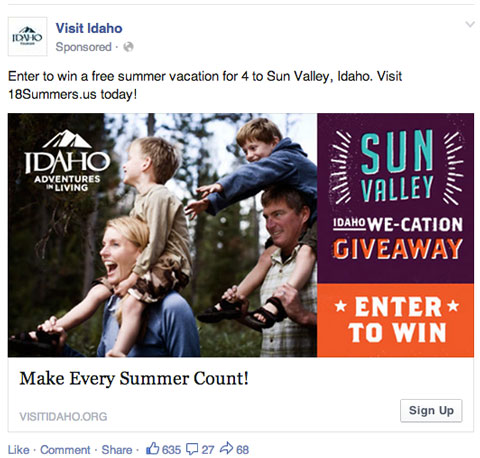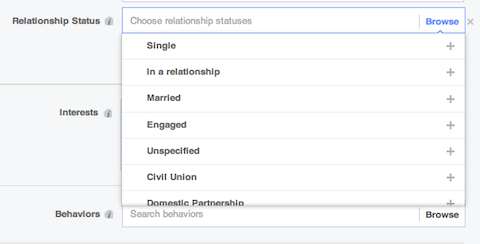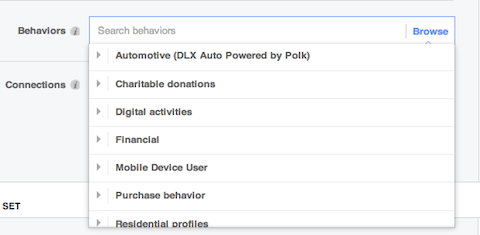 Do you want to lower your Facebook ad costs and increase conversions?
Do you want to lower your Facebook ad costs and increase conversions?
What if you had hundreds of micro-targeting options at your fingertips?
Meeting and exceeding your advertising goals rely on reaching the audience most likely to convert.
In this article you'll discover three Facebook targeting options that help you pinpoint the best audience for your ads.
Refine Ad Targeting With Facebook Data
As Facebook continues to evolve and strives to increase profits for its shareholders, it has slowly been rolling out a variety of advertising options to deliver a better experience for its advertisers.
The crux of those efforts is offering precise demographic targeting.
In early 2013, news began circulating that Facebook was teaming up with some very powerful data giants (Epsilon, Acxiom and Datalogix) to allow brands greater access to a vast amount of audience data. These three data giants not only tap into shopper loyalty programs, but also consumer purchase habits, demographic information and a host of other options from both online and offline consumer activity.

For purposes directly related to this article, it's important to note that Facebook also acquires behavior, demographic and interest data from its own internal data collection. Additionally, they collect data from external sources such as the “U.S. Census, warranty cards, registration information, the Department of Motor Vehicles, public record information, survey data and other offline sources.”
Facebook also gathers “U.S. consumer data on where consumers shop, how they shop, what products and brands they purchase, the publications they read and their demographic and psychographic attributes.”
Below I discuss how all of that data helps Facebook advertisers refine their target audience according to demographics, interests and behaviors.
#1: Use Demographic Data to Hone Audiences
As a consumer, it may be disconcerting to know that Facebook collects so much personal data. As an advertiser, it's the jackpot.
Facebook uses the data it collects to provide you with deep demographic targeting. Before, that wealth of information was reserved for advanced advertisers who used Power Editor. Now it's available to everyone via Facebook’s Ad Creation tool.
To use the extensive demographic targeting, create an ad and scroll down to the Audience options (under the Text and Links box) and click the More Demographics button.
Get World-Class Marketing Training — All Year Long!
Are you facing doubt, uncertainty, or overwhelm? The Social Media Marketing Society can help.
Each month, you’ll receive training from trusted marketing experts, covering everything from AI to organic social marketing. When you join, you’ll also get immediate access to:
- A library of 100+ marketing trainings
- A community of like-minded marketers
- Monthly online community meetups
- Relevant news and trends updates
Currently, Facebook's demographic targeting offers 10 categories, each with subsets—amounting to well over 100 segmented demographic targeting options.

For example, if you select the Relationship option, you'll see Interested In and Relationship Status. These two categories are strikingly similar to the old Facebook demographic options. However, when you click through and examine each, you see how broad the segments have become.
Now you can target not only users who are married, single or divorced, but also open relationship, complicated, domestic partnership, separated, civil union and more.

Discover Proven Marketing Strategies and Tips
Want to go even deeper with your marketing? Check out the Social Media Marketing Podcast! Publishing weekly since 2012, the Social Media Marketing Podcast helps you navigate the constantly changing marketing jungle, with expert interviews from marketing pros.
But don’t let the name fool you. This show is about a lot more than just social media marketing. With over 600 episodes and millions of downloads each year, this show has been a trusted source for marketers for well over a decade.

Each of the 10 main demographic options offers this type of expanded segment choice. I encourage you to click through each to see what options are available to you.
Take advantage of the data Facebook and its partners supply. The deeper you delve into your audience's needs, wants, habits, etc., the more successful your campaigns will be.
#2: Segment Interests to Lower Ad Costs
Not too long ago, Interests was the only option in the Ad Creation tool that allowed advertisers to segment their audience.
According to Facebook, Interests now include “pages [users have] liked, their interests and activities.”
Based on the interests you choose to target, Facebook provides suggestions or lets you browse through a list of related interests that allow you to segment your audience to a greater degree.
In this example, I've selected Home and Garden as an interest, and Facebook has suggested HGTV, Home Improvement, DIY, Interior Design and more.

When choosing interests, be as focused as possible. Interests are an important factor in lowering your cost per click (CPC) and raising your click-through rate (CTR).
This is where a keen appreciation for your target audience truly comes into play. If you do not understand your audiences' interests, hobbies and activities, you'll have a difficult time bringing down ad costs and increasing ROI.
#3: Incorporate Behavior for High Conversions
Behavior targeting is mostly a result of offline activities and is extremely effective at creating conversions.
While it can be a very powerful tool, behavior targeting can also cut a large chunk out of your ad budget. Of the three—demographics, interests and behavior—I've personally found behavior targeting to be the most expensive.
As shown in the image below, behavior choices are quite varied. Each one of the categories provides hundreds of behavior targeting opportunities.

For example, the Automotive category includes focused targeting for New Vehicle Buyers (near market), New Vehicle Shoppers (in market) and Used Vehicle Buyers (in market).
Consider the possibilities of targeting expectant parents who are in the market for a new crossover or hybrid vehicle. If you already know they're in the market and you develop a highly targeted ad campaign centered around the type of car they're looking for, there is no doubt your conversion rate will be extremely high.
Each behavior choice offers similarly detailed information. Purchase behavior in particular is a targeting goldmine. Select any of its subsets to bring up an entirely new list of options you can use to segment your audience.
As an example, if you're interested in purchase behavior related to anyone interested in sports and outdoors, you can narrow the market down to specific sports and combine that with high-end or low-end retail to segment even further.
The Bottom Line
If there's one crucial ingredient to Facebook marketing, it's targeting the right audience. Facebook's data helps you do that with precision.
A keen appreciation of your audience translates into lower costs, greater engagement and higher conversion rates for your brand.
Play around with each of the main options (Demographic, Interests and Behavior), run some A/B tests and determine which avenue works best for your business. The possibilities are truly endless.
What do you think? Have you used Facebook's in-depth targeting? Which one has provided the best results at the lowest cost? Leave a comment below.
Attention Agency Owners, Brand Marketers, and Consultants

Introducing the Marketing Agency Show–our newest podcast designed to explore the struggles of agency marketers.
Join show host and agency owner, Brooke Sellas, as she interviews agency marketers and digs deep into their biggest challenges. Explore topics like navigating rough economic times, leveraging AI, service diversification, client acquisition, and much more.
Just pull up your favorite podcast app, search for Marketing Agency Show and start listening. Or click the button below for more information.

